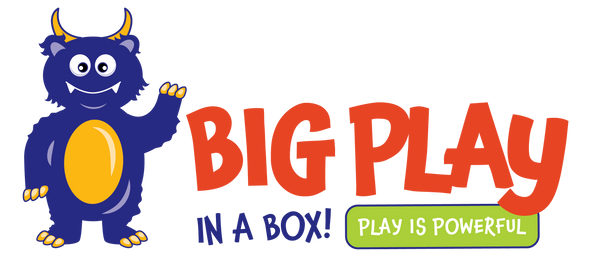
The emotional rollercoaster of raising young children can be exhausting. BIG emotions can come on quickly and without warning. Within 5 minutes you can see your child looking like a happy-go-lucky child to angry as a hornet, followed by a touch of sadness to top it off. All within 5 minutes!
Our children are not born with the maturity to sort these emotions out naturally and independently. Studies show our emotional maturity does not fully happen until our mid-twenties! Yikes!
While this is a scary fact, it doesn't mean that we should just leave our kids out there to figure it all out on their own. As an Occupational Therapist, I received a huge influx of referrals for children who were having difficulty regulating their emotions to the extent that disruption of family dynamics was occurring.

I needed to come up with strategies to help these families teach their children how to manage these BIG feelings more effectively with the eventual goal for the child to manage them more independently.
A BIG part of overreactions seemingly occurs around the concept of "change". As a child (and with many adults), change of any sort can be unpredictable and scary. We, as adults, have more or less figured out how to adapt to changes without disrupting those around us. Children, on the other hand, have not.
One of the commonly used tactics I would use as a therapist would be to introduce the characters above. Super Flex and Hard Head. Kids can relate to superheroes and villains. While I never implied that a child was a villain, (although there may have been times I was thinking so, ha!) Hard Head could be someone we could "blame" when a child was struggling with flexible thinking.
Once a child became familiar with the terminology of Hard Head and Super Flex, it was so much easier to hash out examples of past behaviors or difficulties and label what type of thinking may have been occurring.
Of course, it is not just important to be able to label what type of thinking may have been occurring, it is just as vital to teaching how to reach a level of "Flexible Thinking".

Expecting a child to learn a strategy after one time of going over, is unfortunately not realistic. Strategies have to be gone over time and time again. It is best to approach your child during optimal listening times and when they are calm and regulated. Example times may be when you are talking before bedtime, during bath time, dinner, or in the car.
Focus on strategies for progress versus scolding for past behaviors. Read stories together and find opportunities to discuss who in the book was practicing flexible thinking and who was using Super Flex strategies versus Hard Head disruptions.
Change can be hard for everyone. If you predict a change in your child's schedule, environment, or plans, give your child as much warning as you can. They thrive on schedules and predictability. They do not get to control as easily as we do how our day looks. Support your child by going over the tools from above often and with intention. Find ways and opportunities to praise your child when he/she got through a particular situation that could have let Hard Head win with an overreaction that was scary for the child as well as those around.
Big Play in a Box has some great tools to help support your family in this journey. Our April Subscription Box is supporting multiple opportunities to teach your child about BIG feelings. We also have an amazing Fidget Box that assists all ages when times get stressful or overwhelming.
We hope using our Super Flex and Hard Head characters will help you and your family muster through some of those uncomfortable times when parenting your young children. Who knows...perhaps when that child becomes a teenager, you will still be able to use the terminology to benefit during those unpredictable times as well!

